Unlock the secrets to a flawless fit. Learn how to accurately measure your body for tango blouses, skirts, dresses,...

How Long Do Tango Shoes Really Last? A Guide to Lifespan and Care
What is important to know about the durability of tango shoes
Every tango dancer knows the unique feeling of slipping into a favorite pair of shoes—ones that seem to guide your steps effortlessly across the floor. But even the most perfectly broken-in pair has an expiration date. Knowing how long tango shoes typically last, and more importantly, how to care for them properly, is essential to both your comfort and performance.
Tango shoes undergo significant stress: pivots, weight shifts, heel drops, and countless steps across various surfaces. Over time, even the most well-made pair will lose support, structure, or grip. But this process is far from uniform—how long your shoes last depends on many variables, from how often you dance to the type of materials used.
This article breaks down everything you need to know about tango shoe longevity. From signs of wear to care techniques that extend lifespan, we’ll help you become not just a better dancer—but a more informed one.
Table of Contents
- Introduction
-
- Factors That Influence How Long Tango Shoes Last
- How to Recognize When Your Shoes Are Worn Out
- Typical Lifespan by Shoe Type and Usage Frequency
- Maintenance and Storage Tips to Prolong Shoe Life
- Common Mistakes That Reduce Shoe Lifespan
- When to Repair vs. When to Replace
- What the Pros Say: Advice from Dancers Who Wear Out Shoes Constantly
- Final Thoughts: What to Keep in Mind
- Further Reading
1. Factors That Influence How Long Tango Shoes Last
Tango shoes don’t come with expiration dates. Their lifespan varies based on several factors:
Key Influencers:
- Frequency of use
- Daily practice vs. occasional milongas.
- Dancing surface
- Wooden floors are gentler than tile or concrete.
- Material quality
- Genuine leather or suede typically lasts longer than synthetic alternatives.
- Fit and Support
- Shoes that fit well wear out slower; poorly fitted ones stretch, warp, and lose form.
- Body mechanics
- Dancers with strong posture and balance place less strain on their shoes.
Pros & Cons of High-Quality Shoes:
- Pros:
- Last longer, better materials, improved support.
- Cons:
- Higher price point, require more care.
Tip: If you dance more than three times a week, consider rotating two pairs to extend both lifespans.
2. How to Recognize When Your Shoes Are Worn Out
Tango shoes don’t fall apart overnight. Instead, they subtly signal that their time is coming to an end.
Warning Signs:
- Flattened cushioning – You feel the floor more than usual.
- Loose straps or stretched leather – Compromises stability.
- Worn-down soles – Especially dangerous on slippery surfaces.
- Heel looseness or instability – Major red flag for safety.
- Pain during or after dancing – Not always your body’s fault.
“If the shoe stops helping you pivot, and starts resisting your movement, it’s done.” – Andrea Uchitel, tango performer and teacher
Tip: Regularly inspect your shoes under bright light—check seams, soles, and heel joints every few weeks.
3. Typical Lifespan by Shoe Type and Usage Frequency
While individual results vary, here's a general guideline based on experience level and shoe type:
-
For Followers (Heels):
- Occasional dancers (1–2x/week): 9–18 months
- Regular dancers (3–5x/week): 4–8 months
- Professional/instructors: 2–6 months
-
For Leaders (Flats or low-heeled):
- Occasional dancers: 12–24 months
- Regular dancers: 6–12 months
- Professional/instructors: 4–9 months
-
Shoes Used on Rough Surfaces (e.g., outdoor festivals):
- Expect at least 30% shorter lifespan if used outdoors frequently.
Tip: Mark the date when you first wear a new pair to track aging and compare durability between brands.
4. Maintenance and Storage Tips to Prolong Shoe Life
Proper care is essential if you want your shoes to last longer than a season.
Care Techniques:
- Brush suede soles regularly to prevent glaze buildup.
- Use a soft cloth to clean leather—avoid water and harsh chemicals.
- Let shoes air out after dancing to prevent odor and material breakdown.
- Store them in breathable bags, not plastic, to avoid mildew.
- Keep heels supported using shoe trees or tissue paper when not in use.
Pros of Regular Maintenance:
- Keeps shoes performing well longer
- Preserves appearance
- Reduces odor and interior breakdown
Tip: Use rotating heel protectors to reduce wear and provide extra grip on slippery floors.
5. Common Mistakes That Reduce Shoe Lifespan
Even well-meaning dancers can unknowingly shorten their shoe's life.
Mistakes to Avoid:
- Wearing shoes outdoors – Even “just to the car” causes damage.
- Dancing with wet soles – Leather warps and becomes brittle.
- Overtightening straps – Stretches material prematurely.
- Improper cleaning methods – Alcohol or soap may ruin finishes.
- Storing shoes crumpled in dance bags – Misshapes the structure.
Tip: Keep a small cleaning cloth and a spare shoe bag in your dance bag for quick maintenance on the go.
6. When to Repair vs. When to Replace
Repairs can extend life, but only to a point.
Common Repairable Issues:
- Heel tips worn down
- Loose straps or hardware
- Minor sole separation
- Worn suede soles (can be brushed or replaced)
When to Replace Entirely:
- Structural instability (wobbly heel or broken shank)
- No more arch support
- Severe stretching or warping of the upper
- Inner lining degraded or painful
Pro Advice: A good cobbler can extend your shoes' life by months—but never at the cost of safety.
7. What the Pros Say: Advice from Dancers Who Wear Out Shoes Constantly
Professional dancers go through multiple pairs per year—but they also learn what works.
“I know a shoe is done when I stop trusting it. If I’m second-guessing my next pivot or it doesn’t hug my foot anymore—it’s out.” ~ Mariana Montes, tango performer
“I alternate between two pairs at all times. One to rehearse in, one to perform in. It helps both last longer.” ~ Gustavo Naveira, maestro de tango
Tip: Keep your oldest pair as a practice backup, but don’t push them into milonga use once they lose form.
Final Thoughts: What to Keep in Mind
Tango shoes, no matter how beloved, are not immortal. Understanding their typical lifespan and learning to spot the signs of wear ensures you always dance at your best—secure, balanced, and comfortable.
From the moment you break them in, your shoes are on a journey. By caring for them properly—cleaning, rotating, storing—you give them a chance to serve you for many tandas to come. And just like any great partnership, knowing when to say goodbye is part of the respect you owe to what helped you grow.
Whether you're a weekend dancer or a stage performer, investing in good tango shoes—and maintaining them with intention—will reward you every step of the way.
Further Reading
- How to Take Good Care of Your Tango Shoes
- Breaking in Tango Shoes – How to Soften Them for Safe Dancing
- Choosing the Right Sole for Your Tango Shoes
- A Quick Guide: How to Choose the Perfect Tango Shoes
or, if you feel ready... you can start shopping right away:
Shoes – Clothing – Accessories







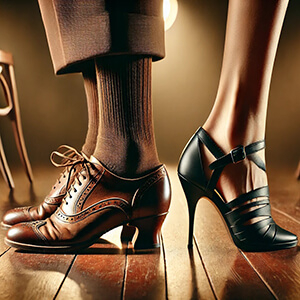
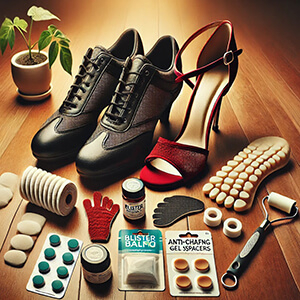
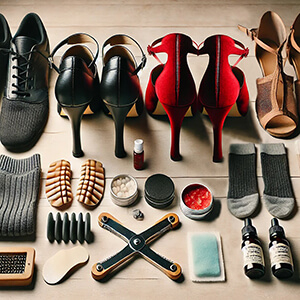
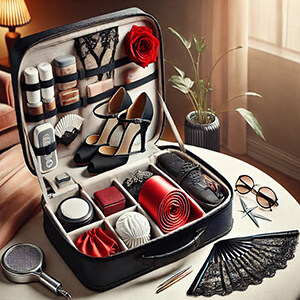




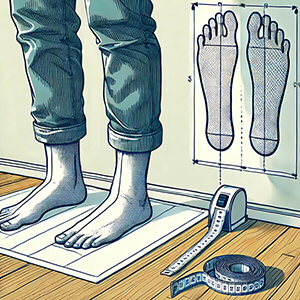
Leave a comment